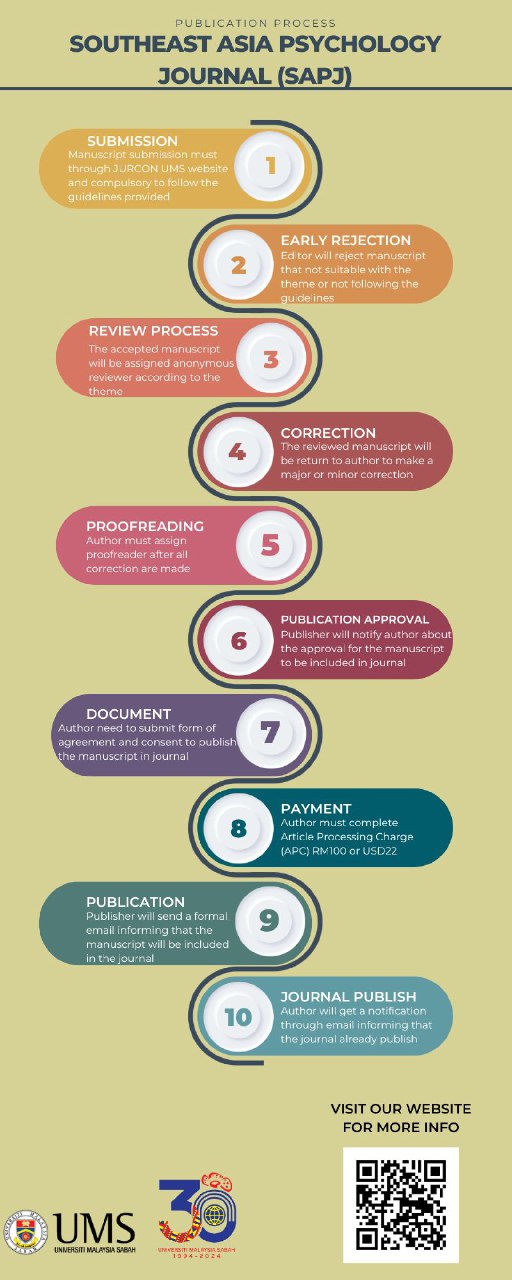TECHNOLOGY USAGE AND ATTITUDE INFLUENCE ONLINE LEARNING SELF-EFFICACY
DOI:
https://doi.org/10.51200/sapj.v9i2.5078Keywords:
Online Learning Self-Efficacy, Media and Technology Usage, Psychological Distress.Abstract
The outbreak of the novel coronavirus has created quite a restless situation globally. Though the pandemic outbreak has invited much confusion, it has also generated many opportunities like learning to effectively use technology in every walk of life. Online learning has become inevitable in the era of COVID-19. The study examines the influence of media, technology usage and attitude towards online learning self-efficacy. Further, the study examines the relationship between online learning self-efficacy, psychological distress, and resilience in university students during the COVID-19 pandemic that brought a sudden shift from conventional teaching to online teaching in Universities in India. The study was conducted among 257 students studying in colleges and universities in India between 18 to 30 years of age. The findings showeda significant gender difference in online learning self-efficacy and media technology usage, in which male studentswere significantly higher than female students on media and technology usage and female students were significantly higher than male students on online learning self-efficacy. Multiple regression analysis was carried out to assess the relationship between online learning self-efficacy with media and technology usage and attitude towards media and technology. It was found that attitude towards media and technology positively predicted online learning self-efficacy. The findings were
References
Alqurashi, E. (2016). Self-Efficacy in Online Learning Environments: A Literature Review. Contemporary Issues in Education Research (CIER), 9(1), 45-52. https://doi.org/10.19030/cier.v9i1.9549
Aroian, K.J., Norris, A.E. & Chiang, L. (2003). Gender Differences in Psychological Distress among Immigrants from the Former Soviet Union. Sex Roles 48, 39–51. https://doi.org/10.1023/A:1022392528490
Arslan, N. (2017). Investigating the Relationship between Educational Stress and Emotional Self-Efficacy, Universal Journal of Educational Research, 5(10): 1736-1740, 2017. https://doi.org/10.13189/ujer.2017.051010.
Beul, S., Ziefle, M., & Jakobs, E. M. (2011). Users' preferences for telemedical consultations: Comparing users' attitude towards different media in technology-mediated doctor-patient-communication, Pervasive Health 2011, 614-620. https://doi.org/10.4108/icst.pervasivehealth.2011.246035
Calvert, J. F., Kaye, J., Leahy, M., Hexem, K., & Carlson, N. (2009). Technology use by rural and urban oldest old. Technology and health care: Official journal of the European Society for Engineering and Medicine, 17(1), 1–11. https://doi.org/10.3233/THC-2009-0527
Carolyn, L., Hill, M. & Ingram, L.A. (2020). An Exploratory Study of the Relationship between Social Technology Use Depression on College Students, Journal of College Student Psychotherapy, 34:1, 33-39 https://doi.org/10.1080/87568225.2018.1508396
Cathy, L., Lalani, F. (2020). The COVID-19 pandemic has changed education forever. This is how World Economic Forum. Retrieved from, https://www.weforum.org/agenda/2020/04/coronavirus-education-global-covid19-online-digital-learning/
Cook, C. W. (2014). Technology and Online Education: Models for Change. A 360° Approach to Student Success. Florida Institute of Technology, USA. Retrieved from, https://files.eric.ed.gov/fulltext/EJ1073243.pdf
Cotten, S. R., Ford, G., Ford, S., & Hale, T. M. (2012). Internet use and depression among older adults. Computers in human behavior, 28(2), 496-499. https://doi.org/10.1016/j.chb.2011.10.021
Fallan, L. & Opstad, L. (2016). Student Self-Efficacy and Gender-Personality Interactions. International Journal of Higher Education,5(3), 2016. https://doi.org/10.5430/ijhe.v5n3p32
González, A., Ramírez, M.P., & Viadel, V. (2015). ICT Learning by Older Adults and Their Attitudes toward Computer Use, Current Gerontology and Geriatrics Research, vol. 2015, Article ID 849308, 2015. https://doi.org/10.1155/2015/849308
Goswami, A. and Dutta, S. (2016) Gender Differences in Technology Usage—A Literature Review. Open Journal of Business and Management, 4, 51-59. https://doi.org/10.4236/ojbm.2016.41006
Hamburger, Y. A., & Ben-Artzi, E. (2000). The relationship between extraversion and neuroticism and the different uses of the Internet. Computers in human behavior, 16(4), 441-449.
Huang, V. & Chiungjung, S. (2013). Gender differences in academic self-efficacy: A meta-analysis. European Journal of Psychology of Education. 28. https://doi.org/0.1007/s10212-011-0097-y.
Lee, R. B., Baring, R., Maria, M. S., & Reysen, S. (2017). Attitude towards technology, social media usage, and grade‐point average as predictors of global citizenship identification in Filipino University Students. International Journal of Psychology, 52(3), 213-219. https://doi.org/10.1002/ijop.12200
Mark, G., & Semaan, B. (2008). Resilience in collaboration: Technology as a resource for new patterns of action. Computer-supported cooperative work, 137-146. https://doi.org/10.1145/1460563.1460585
Martin, M., Ward, J. C., & Clark, D. M. (1983). Neuroticism and the recall of positive and negative personality information. Behaviour Research and Therapy, 21(5), 495-503.
Mikusa, M.E. (2015). The effect of technology self-efficacy and personal engagement on students' and teachers' attitudes toward technology use in education, Educational Leadership Doctoral Program, Reich College of Education. Retrieved from, https://core.ac.uk/download/pdf/345081898.pdf
Probst, J.C., Laditka, S.B., Moore, C.G., et al. (2006). Rural-Urban differences in depression prevalence: implications for family medicine. Family Medicine, 38(9), 653-660. Retrieved from, https://pubmed.ncbi.nlm.nih.gov/17009190/
Rapaport, C., Hornik, L., & Lahad, M. (2018). The relationship between community type and community resilience. International Journal of Disaster Risk Reduction, 31(4), 470-477. https://doi.org/10.1016/j.ijdrr.2018.05.020.
Ridout, B., Campbell, A. (2018). The Use of Social Networking Sites in Mental Health Interventions for Young People: Systematic Review, Journal of Medical Internet Research, 20(12), e12244.https://doi.org/10.2196/12244.
Rosen, L.D., Whaling, K., Carrier, L.M., Cheever, N.A. & Rokkum, J. (2013). The Media and Technology Usage and Attitudes Scale: An empirical investigation. HHS Public Access, 29(6). 2501–2511. https://doi.org/10.1016/j.chb.2013.06.006. Retrieved from https://www.ncbi.nlm.nih.gov/pmc/articles/PMC4338964/
Seabrook, E., Kern, M., & Rickard, N. (2016). Social Networking Sites, Depression, and Anxiety: A Systematic Review, Journal of Medical Internet Research, 3(4), e50. https://doi.org/10.2196/mental.5842
Wang, C.H., Shannon, D.M., & Ross, E.M. (2013). Students’ characteristics, self-regulated learning, technology self-efficacy, and course outcomes in online learning, Distance Education,34(3), 302-323. https://doi.org/10.1080/01587919.2013.835779
Wang, Y., Kala, M.P. & Jafar, T.H. (2020). Factors associated with psychological distress during the coronavirus disease 2019 (COVID-19) pandemic on the predominantly general population: A systematic review and meta-analysis, Plos One 15(12), e0244630. https://doi.org/10.1371/journal.pone.0244630
Zhang, Z. J., Chuan, L.Z., Xian, G.Z. & Xiang, M.L. (2015). Relationship between self-efficacy beliefs and achievement motivation in student nurses. Chinese Nursing Research, 2(3), 67-70. https://doi.org/10.1016/j.cnre.2015.06.001. Retrieved from, https://www.sciencedirect.com/science/article/pii/S2095771815000468







